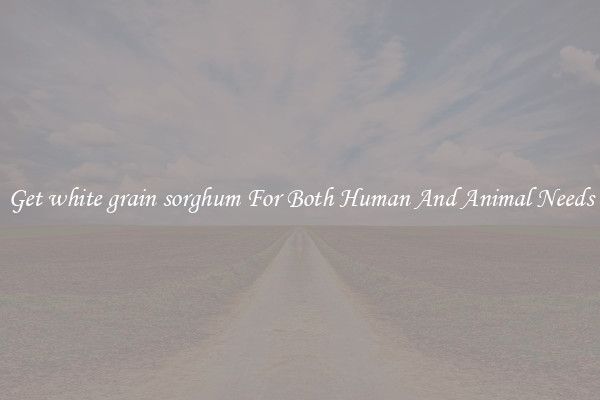Get white grain sorghum For Both Human And Animal Needs
Grain sorghum, commonly referred to as milo, is a versatile crop that has valuable uses in both human and animal consumption. Its popularity has been growing steadily due to its numerous benefits and the variety of ways it can be utilized.

One of the primary uses of white grain sorghum is as a food source for humans. It is an excellent alternative to traditional grains such as wheat, rice, or corn. The grain can be milled into flour and used to make various products like bread, cakes, pastries, and even beer. Its mild taste and soft texture make it a versatile ingredient in various cuisines around the world. Additionally, white grain sorghum has been gaining recognition as a nutritious option for gluten-sensitive individuals, as it is naturally gluten-free.
Furthermore, white grain sorghum is an important ingredient in animal feed. It is a valuable substitute for corn and other grains commonly used in animal nutrition. The high starch content and energy levels make it an ideal feed for poultry, pigs, and cattle. Sorghum is also rich in protein and fiber, making it a wholesome and well-balanced addition to animal diets. Its digestibility and palatability make it a reliable option for animal farmers.
White grain sorghum has several advantages over other grain crops. One significant advantage is its ability to thrive in drought-prone areas. It is a tough crop that can withstand harsh weather conditions, making it an excellent choice for regions with limited access to water. Additionally, it requires fewer fertilizers and pesticides, making it an economically and environmentally sustainable choice for farmers.
The cultivation of white grain sorghum has economic benefits as well. The crop is a low-cost option for farmers, as it has lower input costs compared to other grains. It also offers a steady income source, as the demand for white grain sorghum continues to rise. Its versatility in both human and animal consumption ensures a stable market for farmers.
In conclusion, white grain sorghum is a valuable crop for meeting both human and animal needs. It provides a nutritious and gluten-free food source for individuals, while also serving as a cost-effective and sustainable feed option for livestock. Its resilience and adaptability make it suitable for cultivation in various regions, even those prone to drought. With its increasing popularity, it is clear that white grain sorghum has a bright future in agriculture and food production.

View details

View details

View details

View details








